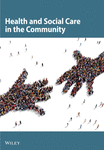The mental health residential care study: the “hidden costs” of provision
Abstract
Reforms to the organization and funding of health and social care in the UK have placed new responsibilities on social and health care purchasers to undertake assessment of the accommodation and care needs of people with mental health problems who are living in the community. This responsibility is hampered by a lack of reliable or complete data on the range of services and costs associated with residential care, in particular the non-accommodation or costs which are hidden in the sense that they are often unaccounted for by individual agencies, such as the use of hospital, community and peripatetic services falling outside residential facilities core functions or budgets. Employing service use and cost data from a wider study of residential care, non-accommodation costs were calculated for a number of residential settings (both in and outside London). As a proportion of total costs of care, these ranged from below 10% in hospital settings to between 13% and 39% in community-based staffed hostels. These figures represent estimates of the cost “add-ons” required for this element of care where only accommodation costs are known. Multiple regression analyses were also undertaken to examine the possible influence of resident, facility and area characteristics on hidden costs. Resident characteristics alone explained only a small amount of the inter-resident variation in hidden costs. The inclusion of care environment, sector and locality enhanced the predictive power of the models. The relevance and interpretation of these findings are discussed.




